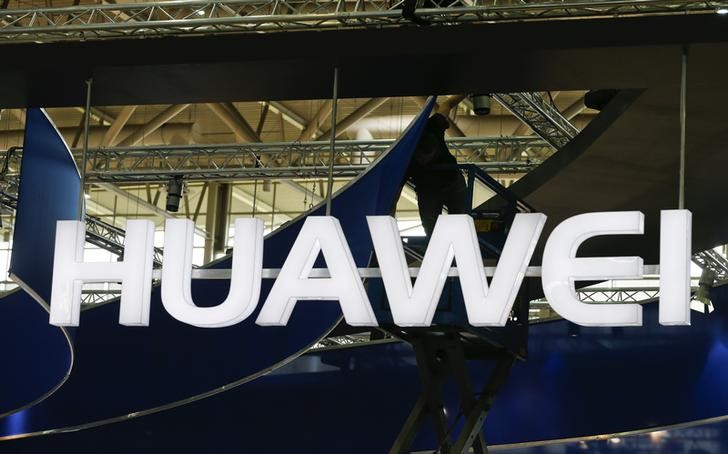David Kirton and Brenda Goh
SHENZHEN/SHANGHAI (Reuters) – Huawei’s latest high-end phone features more Chinese suppliers, including a new flash memory chip and an improved processor, a teardown analysis showed, highlighting the progress China is making towards technological self-sufficiency.
Online tech repair company iFixit and consultancy TechSearch International examined the inside of Huawei Technologies’ Pura 70 Pro for Reuters and found a NAND memory chip that they said was likely packed with the Chinese telecom equipment maker’s own HiSilicon chip, as well as several other components manufactured by Chinese suppliers.
These results have not been previously reported.
Huawei’s resurgence in the high-end smartphone market after four years of U.S. sanctions is being widely watched by competitors and U.S. policymakers alike as it has become a symbol of growing U.S.-China trade tensions and China’s push for technological self-sufficiency.
The companies have also discovered that the Pura 70 phones are powered by Huawei’s advanced processing chipset called Kirin 9010, which is likely just a slightly improved version of the Chinese-made advanced chip used in the Huawei Mate 60 series.
“While we can’t give an exact percentage, we would say the level of domestic component usage is high and definitely higher than in the Mate 60,” said Shahram Mokhtari, iFixit’s lead teardown technician.
“It’s about self-sufficiency, all of this, everything you see when you open your smartphone and see everything that’s made by Chinese manufacturers, it’s all about self-sufficiency,” Mokhtari said.
Huawei declined to comment.
At the end of April, Huawei released four models of Pura 70 smartphones, and the series quickly sold out. Analysts say it is likely to take more market share from iPhone maker Apple (NASDAQ:), while politicians in Washington question the effectiveness of US restrictions on the telecom equipment giant.
remove advertising
.
FLASH MEMORY CHIP MADE IN CHINESE
Earlier analysis by firms such as TechInsights for the Mate 60, launched last August, showed that the phone uses DRAM and NAND memory chips made by South Korean company SK Hynix. At the time, SK Hynix said it no longer did business with Huawei, and analysts said the chips likely came from stock.
The Pura 70 still contains a DRAM chip made by SK Hynix, as found by iFixit and TechSearch, but the NAND flash memory chip was most likely packaged by Huawei’s HiSilicon division this time and consisted of NAND dies with a capacity of 1 terabits each. This is comparable to products from major flash memory manufacturers such as SK Hynix, Kioxia and Micron (NASDAQ:).
However, the companies were unable to pinpoint the wafer manufacturer because the markings on the NAND die were unfamiliar, they added. But iFixit added that they believed HiSilicon could also make the memory controller.
“Upon disassembly, our chip identification expert determined that it was a specific HiSilicon chip,” Mokhtari said.
SK Hynix confirmed that it has “strictly complied with the relevant policies since the announcement of the restrictions against Huawei, and has also suspended any transactions with the company since then.”
CONSEQUENTIAL IMPROVEMENTS
Analysis of the processor used in the Pura 70 Pro by IFixit and TechSearch also suggests that Huawei may have only gradually improved its ability to produce cutting-edge chips with Chinese partners in the months since the launch of the Mate 60 series.
remove advertising
.
According to them, the processor is similar to the processor used in the Mate 60 series, which was manufactured for Huawei by Semiconductor Manufacturing International Corp (SMIC) using the Chinese chip plant’s 7-nanometer (nm) N+2 manufacturing process.
“This is important because news of the 9000S on the 7nm node caused a bit of a panic last year when US lawmakers grappled with the possibility that sanctions imposed on Chinese chipmakers wouldn’t slow down their technological progress after all,” iFixit said.
“The fact that the 9010 is still made on the 7nm process and that it is so close to the 9000S might seem like evidence that chip production in China has indeed slowed down.”
However, he cautioned against underestimating Huawei, saying SMIC still expects to move to a 5nm production node before the end of the year.
SMIC did not respond to a request for comment.


